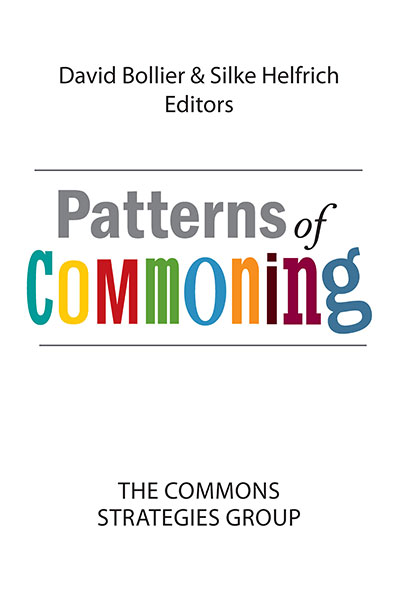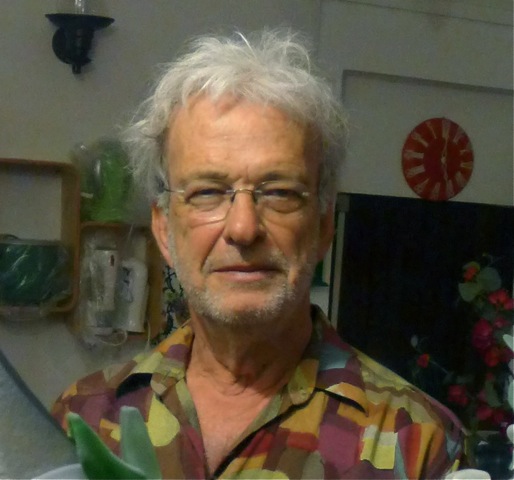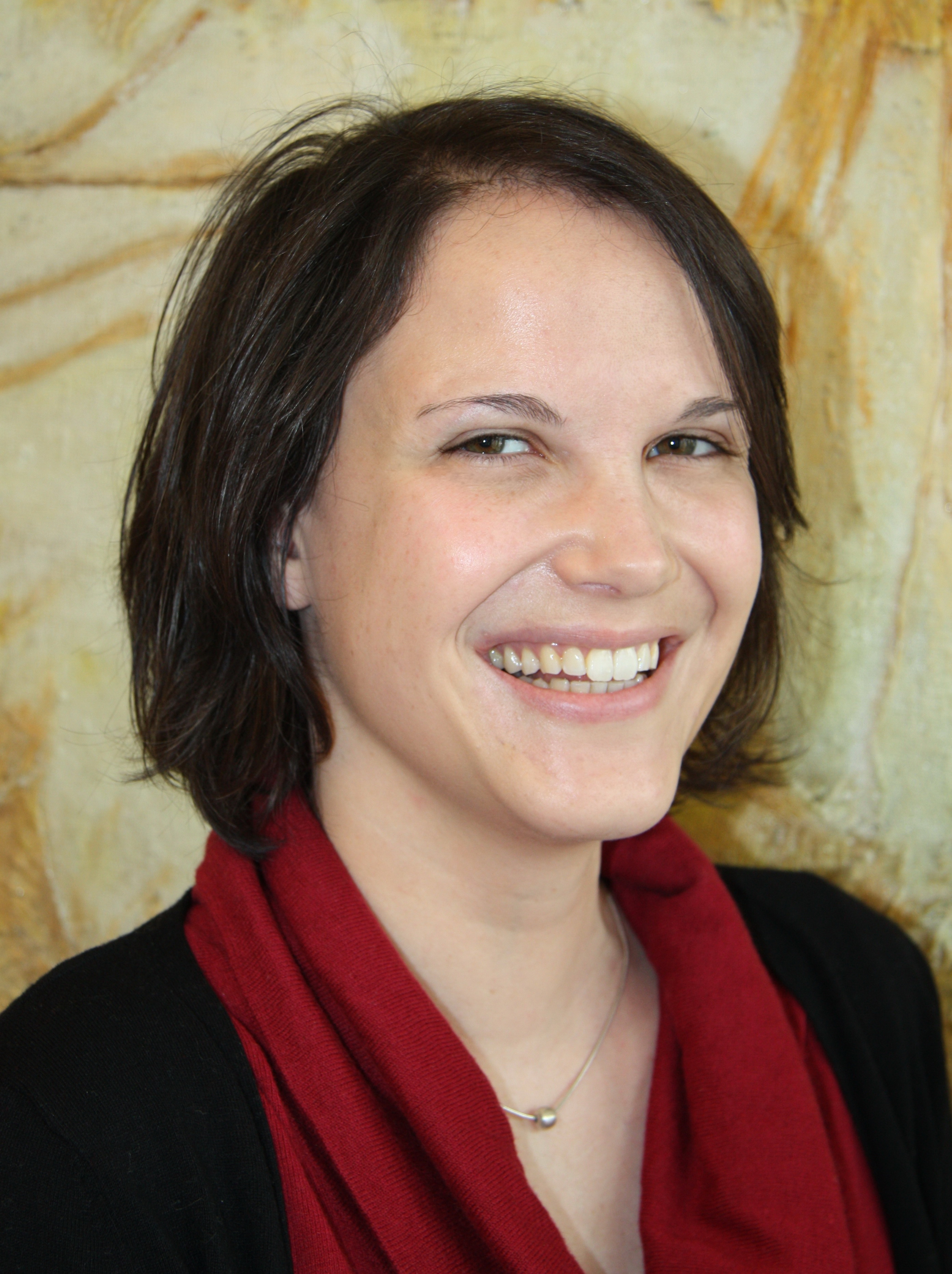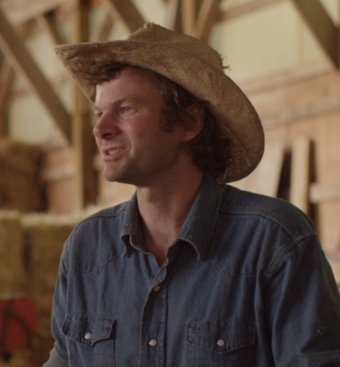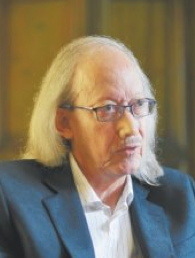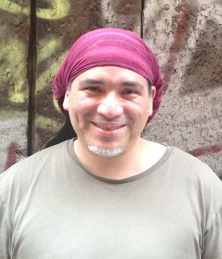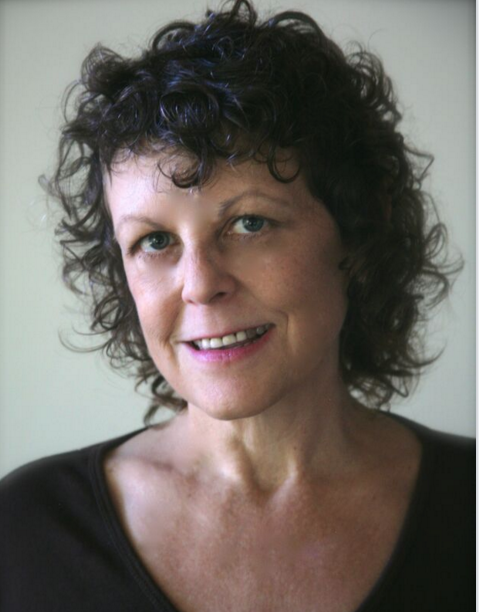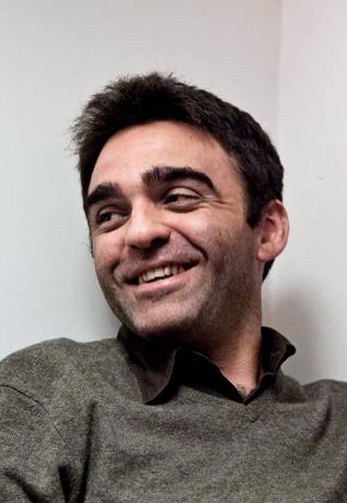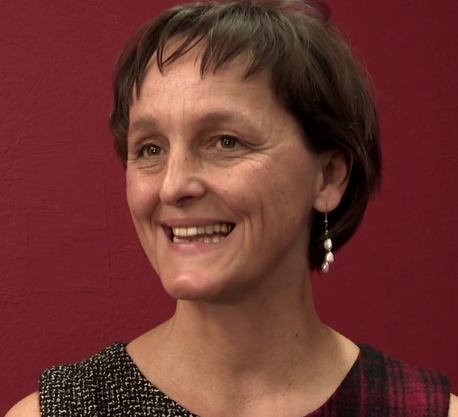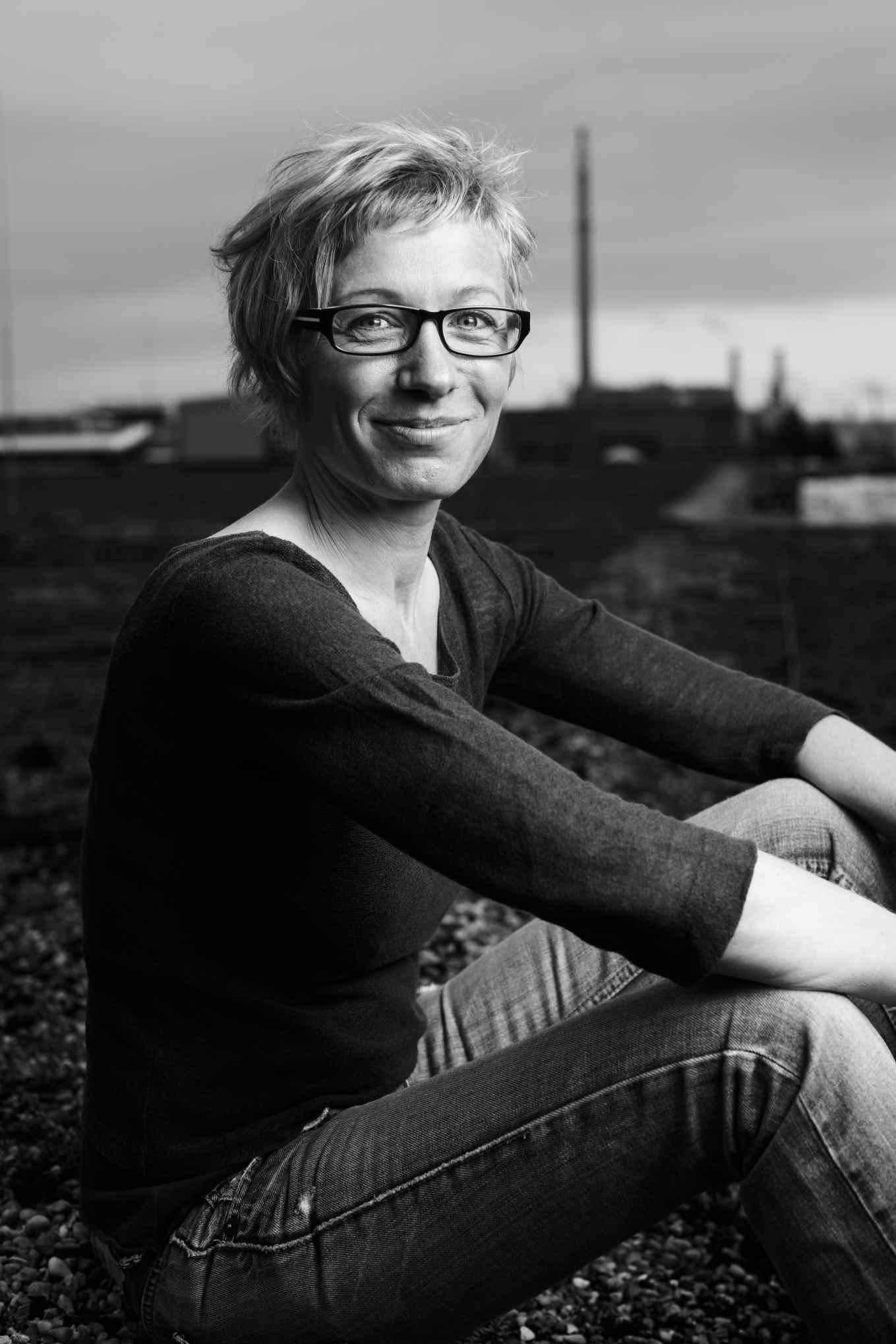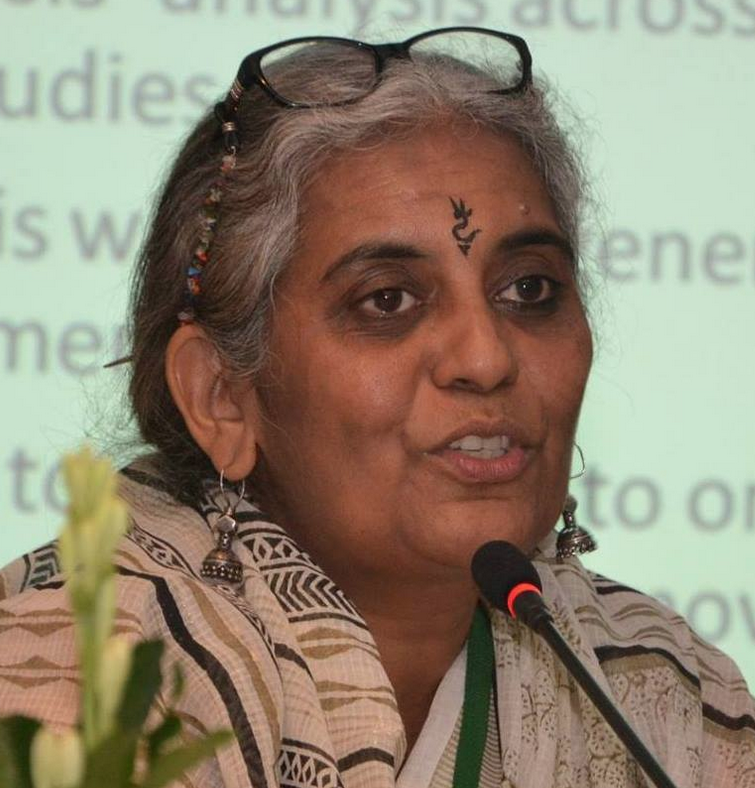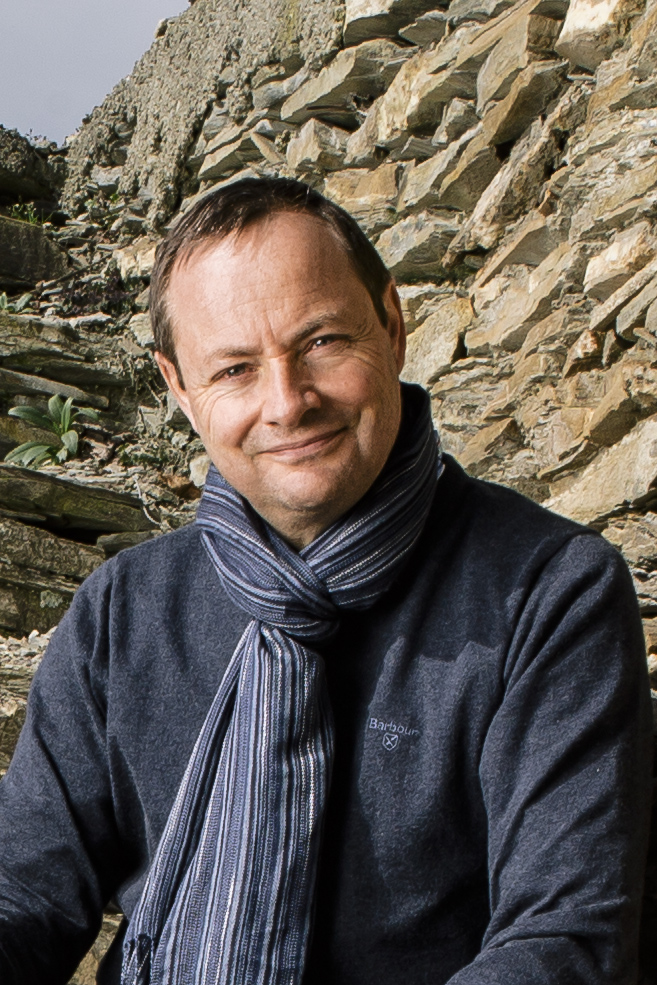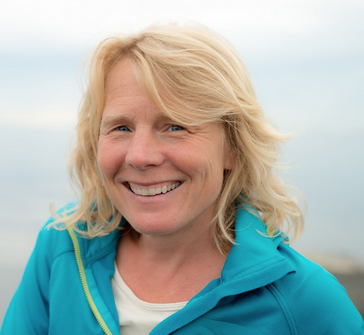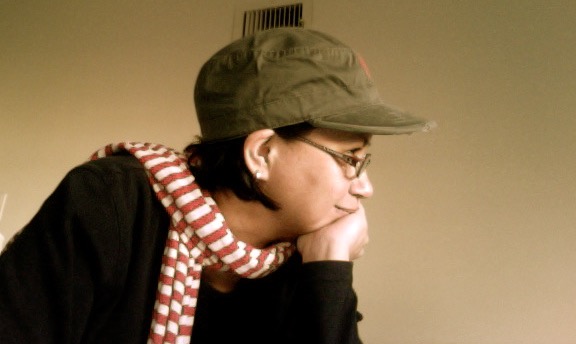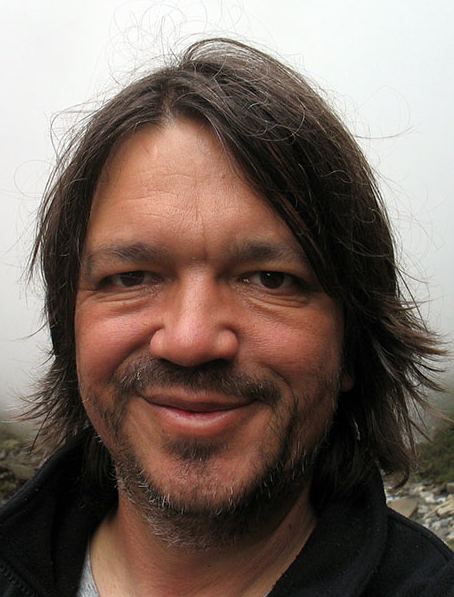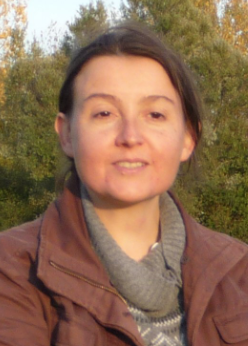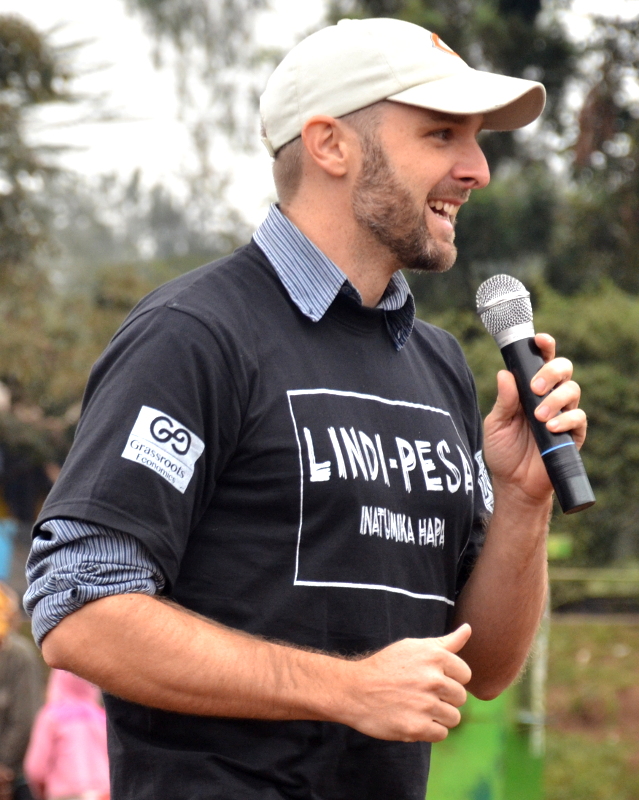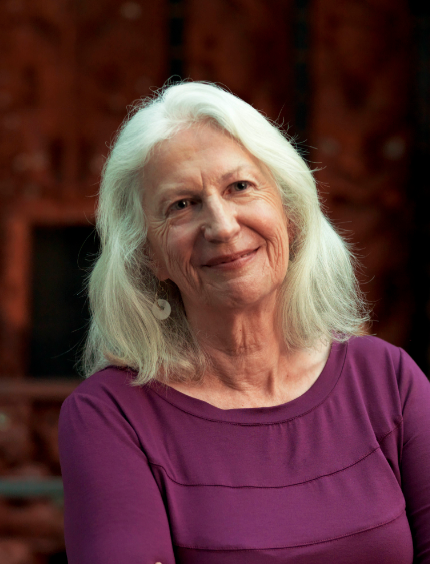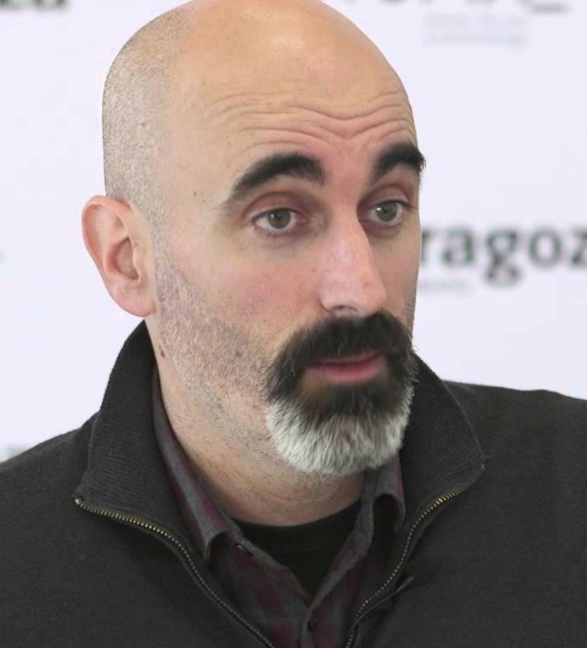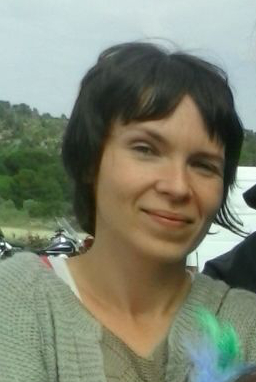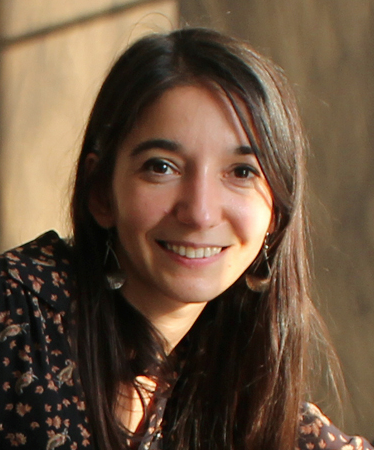Alain Ambrosi (Canada) is a designer and producer of intercultural projects, independent researcher, author, videographer and producer of the Remix The Commons Project.
Patterns of
COMMONING
How I Have Been Conducting Research on the Commons for Thirty Years Without Knowing It
By Étienne Le Roy
What Blocked My View of the Commons
Writing about commons as a member of a scientific community, which itself has developed only recently, has raised a number of problems for me.
First, there is the time lag with which the complex problem of the commons gained our attention in the first place. Why didn’t that happen fifty years ago? Why did it take so long to overcome the obstacles that made us unable to recognize social phenomena as commons phenomena and to think about them as such? Even though I had answers to many questions and was already writing within the paradigm of sharing, I was still unable to ask the questions using commons terminology.
The second problem lies in the fact that opening up the topic of the commons triggers a kind of domino effect. As soon as the first domino falls over – by invoking the commons – many of the concepts on which the idea of modern Western civilization rests lose their apparent balance, and the whole edifice, previously believed to be well-founded, collapses onto itself: the state, the law, the market, the nation, work, contracts, debts, giving, the juristic person, private property, as well as institutions such as kinship, marital law, and the law of succession, are suddenly called into question. We often consider these concepts to be universally valid, but intercultural comparison reveals that they are only a custom, a folkway that deeply influenced our modern Western legal tradition (which itself proves to be a folk law of its own).
Finally, the third problem has to do with the highly political, even polemic character of the contemporary commons debate, as currently expressed in France by Pierre Laval and Christian Dardot in their book Commun. Even the subtitle does not mince words: “Essay on the revolution in the 21st century.” Laval and Dardot bring important questions back into the academic debate, questions that Karl Marx raised as early as the mid-nineteenth century when reflecting upon the meaning and the role of capital.
The attention currently granted the commons suggests approaching these problems one by one, first in order to make the “question of the commons” comprehensible, and then to examine how they relate to contemporary law. One thing should be clear from the outset, however: theoretically, commons could be an alternative to the market and the state, but practically, we are a long way from achieving that. And if we follow Professor Elinor Ostrom, then the unresolved social question of the twenty-first century.1 should in any case focus on how commons and private property might coexist and complement each other.
I graduated from university with degrees in anthropology and public law in 1964. While I was conducting research for my thesis (corresponding to a master’s degree today), I discovered Michel Alliot, a young professor coming from Africa, as well as the scientific discipline of legal anthropology and the land question in Africa, particularly in Senegal. These three discoveries were to change my life.
I selected Michel Alliot as my academic advisor and wrote my doctoral dissertation, one of the first in legal anthropology in France (Le Roy 1970), about the Senegalese land reform and Law 64-46, which was one of the first dissertations on legal anthropology in France. My ambition was to comment not only on the origins and roots of this reform, but also to explain what it actually sought to cover and regulate: namely consuetudinary law, or customary, unofficial types of law.2 I dug into the history of possession of land in a sub-Saharan African society, all the way back to the sixteenth century, and discovered the field of the commons, but could not find a concept, a term for it.
I later discovered that this was because of the ethnocentric ideology of colonialism3 and the foundations on which the thinking of the modern age and the notion of development of that time rested.4 So-called consuetudinary law was an Unidentified Scientific Object (USO). Only a few scholars had attempted to actually comprehend its more profound features. The scientific community usually dealt with legal phenomena in Africa as if they were the opposite of Western legal concepts developed over the past three centuries. Primitivism5 and scientific arrogance are never far apart.
This USO status of consuetudinary law also has to do with the fact that its rules are not formulated according to generally recognized standards or the impersonal criteria of modern laws; instead they manifest themselves as enduring patterns of behavior and the willingness of people to engage in certain forms of action that is stable over time. Now, these can be grasped and researched only by employing specific models, so I decided to use a matrix to represent consuetudes as legal acts. Legal acts not in the sense of written law, but in the sense of patterns that are expressed in behavioral rules that can be found in the various communities.
That is how I succeeded in responding to a phenomenon that I had just discovered and that challenged received bodies of research: legal pluralism. It was surprising that even by organizing my research according to the principles of a matrix analysis, I had already discovered the basic elements of the description of the commons – without being aware of it: a community in which everyone has status, an activity recognized and appreciated by the others, and a resource that – symbolically – permits the intentions and dispositions of everyone involved to be interconnected. In sum, a sanctionable system that amounts to “law.”
In my early works and in those of the 1970s in which I developed the anthropological models of the relationship of human beings to land (Le Roy 2011), I focused on the problem of communities. I could discern fundamental community-based conceptions that influence actions, and my discussions also included the civil-law concept of common goods. But however surprising from today’s perspective, the term “commons” never appeared in my work, even though the mbock thinking of the West African Wolof had already left its mark on my analyses.
Mbock – in the Wolof language – means kinship, and at its core, it also means sharing. At times, it refers to common ancestors, at others, to a particular field (with its specific area and boundaries), a herd, forest areas, and many other things. The discovery that sharing is preferred to exchange suddenly challenges all those insights that anthropology felt to be certain: namely, limited exchange within kinship relations, according to the theory of Claude Lévi-Strauss,6 the concept of the gift according to Marcel Mauss,7 that of property according to Maurice Godelier8, and others. Sharing is the predominant principle of organization in the commons. But I came to understand that only between 1980 and 1990 while I elaborated a new model for managing land and areas for fruit cultivation (Le Roy 1996). In that model, I attempted to explain how Africans (and other humans, too) combine various legal forms of property and resource uses in their complex practices – transcending cultural boundaries that we imagine as defining. Modern science considers the incompatibility or even incoherence of many such combinations practically a truism.
A Reform of Unforeseen Consequence
I told the stories of all these intellectual adventures in my synthesis on land policy on Senegal, from a theoretical perspective (Le Roy 2011). In it, I combined the legal relationships of individualistic modernity (public and private) with those of communitarianism (external, internal and coalitions). In other words, I correlated the categories publicand private, or a combination of the two, with external and internal, respectively. The concept of the common proved useful in ordering these relationships according to the following logic:
- public = belonging to all
- external = belonging to “n” groups
- alliance = belonging to two or more groups
- internal = belonging to one group
- private = belonging to a juridical or physical individual, or legal entity
Doubtless, all these possibilities of collective organization did not already lead to what contemporary commons theory (Bollier 2014; Dardot & Laval 2014) considers to be “commons,” but since 1996, avant la lettre, at least this concept of the common has been at the center of my analyses of land policy. With a thirty-year time lag!
One of the reasons for this false start lies in the anthropological paradigm itself. It concerns itself with “the law” – in my case, regarding land use in Senegal. Accordingly, the conceptual and methodological tools that are required for understanding what has not and literally cannot be thought in the realm of consuetudinary law, can only be expressed in the intellectual categories of lawyers – in other words, norms and legal provisions. Whereas from the anthropologists’ perspective, “law [is] not so much what the texts say, but rather what the actors do with it” (Le Roy 1999). The texts are important, but how they are interpreted and applied is even more important. Or as a French saying goes, “It’s a long way from the cup to the mouth.” In the endogenous, oral African contexts, there are no texts that could be interpreted and no explicit norms which could be the subject of legal commentary. One can only observe the practices! By granting the requisite attention to the positions and roles of actors, their status, their actions and their interrelationships, anthropologists are able to escape the abstractions that fundamentally structure Western legal systems, but which are not to be found in the Wolof and other societies that anthropologists study.
The concept of the commons is an abstraction circulated first and foremost by the field of economics. And it is precisely in economics that Garrett Hardin’s all-too-famous “tragedy of the commons” parable has gained currency since its publication in 1968.9 For at least a generation this make-believe idea that shepherds are unable to use their pastures jointly has undermined and marginalized research on collective resource management. Incidentally, I admit that I did not take this laughable story seriously until the mid-1980s when I began to recognize the collateral damage of this pseudo-theory and its sloppy generalizations.10
The second reason for the false start of the commons in the intellectual debate concerns the theories on “development” applied to countries that were called “underdeveloped” at the time. By passing the Law Concerning the Territory of the Country,11 Senegal finally emancipated itself from a development model that is fundamentally connected to the market and private property. This took place in the name of an African socialism that was at least as open to poet-president Léopold Senghor’s12 Négritude – a poetic discovery of African roots – as it was to breaking with capitalism. Yet in this case, it was not about breaking with capitalism, but about placing limits on the outright dominance of private property norms – a legacy of the colonial era. Accordingly, Law 64-46 did not seek to abolish private property; it even permitted completion of all pending proceedings concerning private rights still awaiting resolution in land registry processes. Applications above and beyond this (for example, for recording further private real estate in the land registry) would thereafter be subject to the control of the administration. This provision was intended to prevent private property, which President Senghor called “egoistic” in a 1964 speech, from having direct effects on social relationships.
According to this reform, the only justification for transforming local, endogenous property rights into state property is to enable market transactions for the public good (Article 13), which then authorizes the state to transfer the rights to private individuals. This approach is based on the assumption that public institutions in Senegal, like any institutions of a liberal, democratic state, are neutral and fair-minded – a presumption that was unfortunately disproven by later facts. We shall see how this “nationalization” flirts with socialism. To this end, we shall first examine the wording of the law and then its practical application.
From the Wording of the Law…
Formally speaking, 96 percent of Senegal’s territory belongs to the nation-state; the remainder is publicly administered plots of land or private landholdings that have already been recorded in the land registry. This “territory belonging to the nation” has no legal personality and is not a legal entity, and so by default it belongs to the Senegalese state. Accordingly, what truly matters in a legal and political sense is the interpretation of the term “belong.” Article 2 interprets it in the sense of trust in a common-law context.
In other words, Law 64-46 changes the arrangements concerning possession of land in a way that is to prove forward-looking for Senegal, for colonial law usually treated these tracts of land as the private property of the state; they were considered unused, “ownerless” areas available to the administration for whatever it chose. Today, by contrast, they are entrusted to specific local administrators and divided into four areas subject to different regulations: 1) urban land; 2) development land (zones classées); 3) land in rural areas (zones de terroirs); and 4) pioneer areas.
A substantial part of this very brief law – just seventeen articles – is concerned with these zones de terroirs that are managed by rural collectivities (communautés rurales). This is where the most references to commons are to be found. The law states that “the land in rural areas (zones de terroirs) are used by members of the local municipalities who guarantee its management and conduct it under state control (…)” (Article 8) and that the decisionmaking power for specific uses (Article 9) or setting aside land (Article 15) lies with the relevant councils of the municipality rural community in question. That is one provision that would actually have authorized self-organization among people to create and formalize a culture of the commons – had party politics not interfered. And this is where real life comes into play.
…to Real Life
Building on my first fieldwork in 1969, and making use of my contacts with the Minister of Rural Development, Ben Mady Cissé, I wanted to get to the bottom of the land-policy questions raised by the experimental implementation of Law 64-46. Following the defense of my doctoral dissertation in 1970, I actually sent my research findings to President Senghor, who unfortunately entrusted them to his Minister of the Interior Jean Colin. Colin, a former colonial civil servant, had become Senegalese by marriage. He saw my findings as a threat to his own plans to place the rural communities under government supervision (in typical French-Jacobin manner) and manage them as regional grassroots collectives (collectivités territoriales de base). The transition from the principle of self-organization to integration in a central administrative network fundamentally changed the role of the rural municipalities’ communities despite the decentralization of government power in 1972.
Commons theory usually underlines the independence of commons from both the market and the state. While markets in Senegal were at a distance from commons, the state got quite involved in land use at the local level by reducing the autonomy of rural communities. The idea of the commons was not only nonexistent as a legal concept, but any disagreements about the commons were settled – at least officially.
Yet the Senegalese people on the ground continued to take up the original reform ideas. Despite a lack of sufficient administrative procedures and overly detailed interventions by the relevant divisions, people took on responsibility for managing their own resources and rallied behind an ethic to curb the spread of private property rights. Even the powerful religious Muslim brotherhoods cooperated, which cannot be said of domestic and foreign investors. They have called for repeal of Law 64-46 since 1980. But despite all the many controversies and conflicts, the law marked its fiftieth anniversary in 2014. Amazingly, despite political, economic, and procedural ambiguities and at times radical opposition in the highest echelons of the Senegalese state, in the end a logic of the commons prevailed in practice. Was this a unique case?
Functional Rather than Institutional Logic
In 2012, I decided to attend a conference for lawyers and legal historians at the University Paris VIII-Saint-Denis on the topic, “The Resurgence of the Commons: Between Illusions and Necessities,” whose debates were later documented in a publication (Parance and Saint Victor 2014). The conference painted a much more positive picture of the commons than was discernible at first from the invitation. I developed three arguments in my presentation:
- Our modern society has lost the experience of commons and commoning.
- The rediscovery of the commons suggests that the paradigm of sharing is more attractive than that of exchange.
- The rise of commons necessarily raises the question about legal pluralism.
To provide evidence for this, I referred to two different experiences: land reforms in Africa and the island states of the Indian Ocean, as well as observations about French society in both urban and rural areas.
Land Reforms and the Limits of Private Property
Putting land reform into practice is always a delicate undertaking. In the African context, it also poses conundrums, because one often must create ownership of land in the first place where previously no such ownership existed – and at times the communities involved refuse to accept its existence at all. And for good reason: they feel safer if they are protected by kinship or other relationships where they live, and not by remote civil institutions directed by people unknown to them. The world has surely changed, but not for everyone, and not in a linear fashion.
The Senegalese land reform illustrated a combination of political concerns, lobbying by international donors, and uncertainty about the dynamics of rapidly changing societies. In the end, experts seeking to set policies face a dilemma. On the one hand, there is an officially proclaimed commitment to so-called modernization at the global level, which must in no case be abandoned; and on the other hand, the resilience13 of communities and societies in the face of countless changes must be supported or there may be outbreaks of unprecedented violence (Appadurai 2013). If it is impossible to reject “progress” in the modern capitalist sense, then at least changes must correspond to the needs of the entire population, and not only to those of the Westernized elite. And they must recognize the limits of reproducible and sustainable “development” driven by globalization.
Even if we researchers have not understood everything over the course of these roughly thirty years, at least we have all learned a lot, in particular through activities of the Association for the Advancement of Research and Studies on the Possession of Land in Africa (APREFA)14, which I chaired from 1986 until 1996. At the time, we established a technical committee – i.e., without political decisionmaking power – on possession of land and development, within the French Ministry of Foreign Affairs. We sought to bring together the researchers’ expertise with diplomats and development cooperation staff who need informed analysis. The committee pursued a notion of applied research and development cooperation practice, and at the same time sought to promote interdisciplinary basic research. Here, too, the central research question was about the extent and form in which private ownership of land was to be recognized.
Our work showed that private property15 and property (as its equivalent in common law) are necessary only in contexts in which the market, organized along capitalist principles, is ubiquitous. Various intermediate forms between a lack of titles of ownership on the one hand and “absolute” property on the other, can both accommodate the needs of local producers and reduce the risk of land-grabbing. The models for dominance and control of soil and natural resources described above are based on this assumption. So are the solutions used by various communities of practice who also implement a commons logic and ethic, but whose practices have rarely been described theoretically. This, too, is a lesson arising from our work: the illusions of development, according to which everyone was to somehow become a private property owner and entrepreneur. Such narrative ideals conceal the necessary displacement of populations, the consolidation of land rents into few hands, and the decline of smaller, more locally oriented producers.
Let us remember: good governance in twenty-first century land policy should include variable configurations of private and common property, always aligned to the needs of respective groups of people on the ground. The Senegalese experience began by desiring to control the expansion of private property rights. For this purpose, the state was accorded a role that it exceeded so tremendously that it in effect eclipsed the commons as a functional and legal entity in Senegalese villages. At the same time, we must recognize the importance of different types of property, just as various kinds of commons exist. This is precisely what my experience on the Comoros has taught me since 1986.
At the time, the FAO (the Food and Agriculture Organization of the United Nations) asked me to head a group of experts tasked with stabilizing land policy on the Comoros. A former French colony, the country experienced a revolutionary crisis between 1975, when it gained independence, and 1978. Among other things, this brought about the occupation of the former colonial properties, where vanilla and flowers for perfume were grown. It also resulted in all land registers being burned; entire archives were annihilated – and with them, the titles of ownership. In 1986, in an economically unstable situation and under pressure from international donors, the government was forced to clarify land policy in order to attract investors, and to do so without provoking new rounds of violence.
Since I was an expert on land rights, my job was to propose various scenarios. I outlined six options and described their potentials and limits. They ranged from “everything” (proactive and rapid expansion of private property to the entire population) to “nothing” (the government would settle for resolving the most sensitive conflicts, thus permitting local power relationships and local forms of negotiation to prevail). If, after almost thirty years, it looks like we are close to “nothing,” because no reform was ever formally put into practice, then we would be closing our eyes to the intellectual and technical revolution that permitted the functionaries of rural development to tackle the problem of land use according to the principle of inalienability that the government approved in 1987. The parliament of the Comoros was unable to fully implement the wording of the law because Hamed Abdallah, the president of the republic, was murdered in November 1989.
The future of major transnational corporations was in danger. And our challenge was now to stabilize smallholder agriculture, so that it could feed the country and guarantee the export of certain colonial goods. To do so, some innovations were necessary, for example, the enclosure16 of plant material on those lands that had previously been freely accessible and had been managed as village commons, but were used by individual families.17
In addition, technical consultants and rural technicians helped hold regular village administrative council meetings: reliable, but hardly formalized meetings of farmers and elders every Friday evening as they left the mosque. The meetings were intended to prevent problems and resolve local tensions before they developed into conflicts. The options I had presented in my legal texts were implemented in social practices because a culture of negotiation prevailed at all levels of political-administrative life, and because the notion of inalienability was favored over that of absolute property. The development consultants had two beneficial effects: they saved the government the political costs and uncertainties of land reform, and they guaranteed the citizenry a lifestyle that, although modest and often close to poverty, was more dignified than that of many of the country’s neighbors (such as Madagascar, which in 1991 had fallen back to its 1896 poverty level again).
Later on, I was to work in Madagascar, too, but only after two more assignments: the first one took me to Niger to contribute to drafting the country’s agricultural legislation (Code rural), the second to Mali, where I observed numerous legal inconsistencies concerning the possession of land. I had been tasked with helping to rescue the country’s cotton industry. All three countries – Niger, Mali and Madagascar – already had their own histories of land tenure law, so simply “copying and pasting” systems that seemed to work in other countries was unthinkable. That would have produced problems similar to those arising in the aftermath of colonialism: private ownership of land that could be used or sold for any purpose; undue state interference in property ownership; and no legal recognition of people’s traditional practices in managing land.
In Madagascar, I plunged into the so-called real economy and observed the wood energy sector. The communally managed eucalyptus plantings on the so-called tanety18 provided a livelihood for the local population. Then I expanded my research to the contractual relationships as I was interested in the substance and extent of leasehold clauses19 as well as sharecropping20 and the true nature of the relevant property rights. I collaborated very closely with Alain Karsenty – a social economist working for CIRAD21, the French research center for international agricultural and development questions – and in 1996, I witnessed the adoption of the so-called GELOSE legislation by Madagascar’s government.
The law does not refer to “absolute property rights.” Instead, it authorizes the parties involved to negotiate resource management contracts, provided the relative security of property rights to land is guaranteed. In 2005 this step resulted in a more far-reaching land reform that permitted a trading office to be established in every municipality where so-called land certificates can be discussed and negotiated. The certificates are legally binding. They are legal documents that ensure the security of the transaction in the relevant administrative region, whereby the desire for more security naturally continues to be linked to the idea of (registered) land registry titles. The certificates provide an interesting middle course between communal management by like-minded people and land titles freely exchangeable on the market, but they are also called into question precisely for this reason. The experience in Madagascar has attracted a great deal of attention internationally, but has not been reproduced elsewhere.
Commons Re-emerge in France, Too
My other world of experience stems from the fact that since the mid-1970s, I have been thinking about how a scientific approach that up to then was exclusively Africanistic could be applied to French (or European) society. The basic idea was to establish legal anthropology, which was still an exotic field, “at home,” too, to get beyond ethnocentric perspectives. And while I was asking myself time and again what law actually was, I developed the idea to expand the fieldwork I had done in Senegal in 1969 and then in the Congo in 1972/73. I was looking for ways in which collective aspirations and communitarian practices were expressed in France – in the relationship between humans and land, and then in negotiations for managing conflicts in France’s juvenile justice system of the 1980s.
In exploring this question, I selected my own ethnic group as the object of investigation, since my cultural belonging made it easy for me to access certain pieces of information and behavior patterns; also, the people of Picardy in northern France are renowned for their consuetudinary law and I had privileged access to detailed information about a specific area within Picardy, the medieval county of Vermandois: it was genealogical material, “commonplace books,” a kind of calendar in which all economic activities, all sales and purchases, all work activities, special weather or political events, even laborers’ jokes, were recorded. The commonplace books as well as the business managers’ records provided the key to understanding how communal practices were retained in a world of farming that was increasingly subject to the capitalist market.
This world fell victim to the trenches on the Somme in 1916, which destroyed the historical legacy as well as the architecture and the landscape of the area.22 Since the eighteenth century, private property had become increasingly powerful in this region of the world. And in the nineteenth century, it continued to spread, but various social and legal practices still bore witness to common points of reference, to the obligation to “keep something jointly,” just as one “keeps company.” For example, commoning means sharing the art of hunting, the social protocols of weddings and funerals, the patronage of one’s own clients and workers, and all the traditions that express social belonging and solidarity in the face of life and death. In France as in Africa, the local agricultural milieu is rich in family relationships and professional ones. And just as in Africa, the limitations on one’s behavior that this entails are experienced and perceived intensely, but not mentioned – and certainly not to a stranger.
Pluralism is a condition for a community to function harmoniously, but this is usually not made a topic of discussion as such. My interviewees agreed in that regard, yet they had never thought about the problem of land from a pluralist perspective before! Examining the structure of ownership revealed that in the villages where I worked, everything belonged to someone. Not a single place was unowned. The land is expensive and among the best in France. Giving away even the smallest portion of land is unthinkable. And indeed there were only a few communal organizational structures in the swamp landscapes along the rivers running through the area.
Yet the physical areas devoted to specific common activities bear witness to longstanding common practices even on “private property,” e.g., playing fistball or gathering forest fruits. That was my first lesson. It was to be confirmed in the Amiénois, my own area of Picardy: a “common” function which is thus inherent and not made explicit can be superimposed on a right of ownership that is exclusive and absolute in principle. That function would then limit the exercise of this right, to the benefit of all members of a certain community insofar and as long as this function requires it. In the absence of players, for example, the fistball fields were transformed into community squares, flowerbeds, places for storing materials, and the like.23 Functional logic triumphs over institutional logic!
These practices illustrate that notions about common space that usually remain in the dark emerge when one starts to look at common uses and the sharing of places. These notions about space are familiar in African societies, but have been forgotten here in Europe where geometrical notions about space dominate. Geometrical notions lead to the surveying and measuring of space, thus enabling people to assign an exchange value to the measure and finally to marketize what has been surveyed and measured (Le Roy 2011); social uses disappear from view. In a topocentric concept, by contrast, all spaces are identifiable by a place (location, point) that retain their own functional identities. These spaces can overlap if they fulfill different functions, and they can create borders and even territories if the functions are similar. The functions may be political, economic, religious, or otherwise. All of this characterizes how a territory is formed.
In other words, one can observe how commons with different functions overlap in a single area. At the same time, a physical space is generally assigned to concrete ownership rights according to the rules of positive law. Of course, such “layerings” of the law with various forms of control complicate the understanding of the people’s culture and their networks. After all, fundamentally speaking, as soon as we enter into the logic of the commons, some of our accustomed mechanisms for interpreting the functioning of a society and its formal regulatory authorities fail. At times, all they can do is represent information in a distorted way – or more likely, as caricatures.
I returned to Michel Alliot’s analyses (2003), in which he asserted that a community shares in three ways: areas of life, a particular type of behavior, and a decision area. This threefold sharing makes communities potentially totalitarian if the practices of sharing are not corrected by plural belongings and identities. By default, as a fact of life, we live in many worlds simultaneously, after all: family, school, political circles, professional life, sports, etc. In each of these worlds, we have a status of our own and an identity of our own. Even if societies transformed by market-oriented norms and state control no longer recognize traditional, communal, threefold sharing as a general rule, practices of sharing continues to flourish among communities comprised of people with multiple part-time identities. I call these groups “neo-communities.”
A supplement to Le Monde of April 4, 2014, on sustainable development, with the suggestive title “Betting on sharing,” took up the commons from the perspective of “alternative consumption.” Above all, it sketched the effects of carpooling and forms of living in cooperatives as promoted in France by the ALUR Act (Law on access to housing and urban redevelopment) following the German model. Journalist Marie-Béatrice Baudet commented that “customs are changing, especially among young people. That is certain, but not yet a revolution.” She quoted Remy Oughiry of the opinion research institute IPSOS: “The followers of collaborative consumption do not reject the consumer society at all. They simply want to regain control over it.” And Oughiry added, “The desire to own property remains very strong.”
Just as Monsieur Jourdain in Molière’s The Bourgeois Gentleman (Le Bourgeois Gentilhomme) discovered that he had been speaking prose all his life without knowing it, we have been practicing commoning through and in our common experiences that we no longer call common. After all, under the influence of neoliberalism, the concept of community has been transformed in French political debate into something negative, an antithesis to the idea of the good life and a negative buzzword in the political debate, with all the side effects that entails (Hatzfeld 2011).
As a result, we are confronted with a difficulty that I linked to an enigma in the land question at the beginning of this chapter. We participate in sharing behaviors that are often long-lasting, but are not identified as commoning. And if people try to name these behaviors, then tend to use terms like “common good,” which have a convenient semantic and political ambiguity but may in fact be undermined by the legal realities. In civil law, a good is a thing in private possession and which can be disposed of at will in any way desired, while a commons must remain intact as a collective resource and cannot be sold at will. For this reason, I will devote the final section of this essay to the legal status of the commons. In principle, this would require that new categories and legal concepts be introduced, but I will refrain from doing so due to a lack of space.
The Legality of the Commons
The commons, singular or plural24, confront us with two problems: the fact that the law is silent, and yet a torrent of legal words purports to regulate what existing law cannot regulate effectively at all. This obvious contradiction requires a kind of anthropological demystification of the state of the law in order to clarify the difficulties of conventional law in managing commons.
The fact that lawyers abuse the law is explained by the very practices of their profession. Still, a majority of citizens continue to trust formal law to deal with problems that it can hardly grasp, or not at all. That is not acceptable. My anthropological experience as a researcher makes me concede that formal law, which we claim is universal in human thinking, is nothing but a construct that credibly corresponds to a particular temporal and local situation and has endured for several generations (for example, in Rome). In Europe, it is only since the seventeenth century that people have come to believe that law can take on a life of its own, largely independent of human agency and more and more specialized, finally brokering an alliance between the state and the market. Bound to political and economic power in this way, and in the course of the colonial adventures of the nineteenth century, this originally Western form of law has now spread to the entire world. Yet the rule of weapons and capital cannot make us forget that what is called “law,” and what goes hand in hand with the modern state, does not correspond to the experiences of three or four billion of our contemporaries around the world. For them, law instead triggers their mistrust and resistance.
In terms of the history of mankind, the law is only a folk law, a local interpretation of a process that is much more general. I call this process legality, or juricidité. If this legality is barely studied, it is because powerful political, economic and ideological interests prevent it. They are the same interests that do not permit the commons to be apprehended and named.
In addition, there is a problem in how to characterize law. If only the law itself is considered as autonomous (Le Roy 2009) – and if its interpreters derive normative categories from it and can treat them semantically as categories of law – then other experiences, whether they are Confucian, indigenous, Muslim, animist, or other traditions, are in principle heteronomous.25 They may resemble law, but they are instead based on social traditions. Legality, by contrast, is identifiable in and through those practices that can be held legally responsible by an authority that is nominally empowered by the group itself to exercise appropriate sanctions. Legality in this sense is tautological because its grounding in social practice may or may not even exist!
This apparent lack of formal recognition of what is and is not law is deeply unsettling to European minds, especially for the Cartesian ones. For they tend to practice a kind of juridification (juridisme), to use Pierre Bourdieu’s (1986) term. Bourdieu considers this a bad habit of anthropologists and others – to formulate legal rules and thus orient rules along the particular conventions of the law in cases where there is actually only habitus, i.e., material for representing structural conditions of existence, preferences that are stable over time. For this reason, it is imperative that two things be respected: on the one hand, not to consider anything to be law which is actually only a standard enacted and recognized by the state (in other words, what is called positive law); and on the other hand, to treat everything else that emerges organically from communities as an authentic product of legality as relevant phenomena: the li26 and fa27 of Confucianism, the Hindu Dharma,28 the Muslim Fiqh29 and Sharia, customs and traditions, etc. Laws belong to the legal order and are its dominant expression, but other forms of social expression and regulation have always existed as well, and will continue to unfold – in particular, forms that regulate the relationships among people in managing their shared wealth. It is precisely these practices that we need to use if we are to enable people to “be commoners” and to take paths that are secured in a different way – not purely through the legality of laws and property rights. If we think that legality offers inappropriate answers, then we must rely on innovative forms of the legal order. And it is up to us to invent them.30
From the Law to Control: About Masteries for Exploring a New Legal Order
Two innovations have already been put up for discussion. I now come back here to legal dominance and control over soil and resources. The idea has taken hold that one could exercise a right to land (ius in re) or could have a claim to be allotted a plot of land or to be a creditor. It has taken hold so firmly that it is difficult to admit that this, too, is only a specific product of our way of thinking. In this way of thinking, law becomes autonomous; it is considered something independent. It is also a condition for constituting the autonomy of the individual in society. The great adventures of democracy in England, America and France are all based on important declarations of rights. Other cultural traditions tend to try and conceive of human beings as parts of complex networks in their interactions with and their obligations toward others, as well as in their ability to mobilize these networks.
In order to do justice to both approaches, I have decided to use an intercultural concept, that of maîtrise,31 of dominance and control, which I first define as follows:
The concept of control mastery suggests a power and a force that grants particular responsibility to those who reserve the rights to a territory more or less exclusively because they are actually affected by what happens there. The concept permits sovereignty and property to be combined – the two concepts provide a “frame” for the debate about land use (…) – by emphasizing that rights and responsibilities can arise from a concrete relationship to space [Translator’s note: Here: “land”] and that this responsibility must be retained or ensured at its core. (Le Roy 1995:489)
By taking up anthropological and intercultural aspects, this concept of control, following Catherine and Olivier Barrière, enables the establishment of “a system for managing the assets of socioecological relationships at the heart of the internal and external relationships of communities.” (Barrière & Barrière 2002:315)
This concept – as well as further clarity about the forms in which resources and their communal management are appropriated and used – enables us to evaluate what does and does not stem from a commons logic in accordance with the conventions of each group, community, or society at a particular moment in its history. As a scientific approach, this concept does not require an a priori definition of what commons are “in their essence.” Instead, it focuses our view on what people share, and it moves strategies of communal management to the center of attention.
Conclusion
Making commons come alive again in everyday life and in the economic and legal systems seems like a revolution that can be interpreted through two lenses. Is it a rediscovery of precapitalist and prestate organizational principles or is it a break with the current political order? Perhaps even this framing does not do justice to the issue. In the epilogue to their book quoted above, Pierre Dardot and Christian Laval write: “Commons are the new political rationality that must replace the neoliberal rationality” (2014: 572). They regard revolution as the self-institution of society, an idea of Promethean dimensions of greatness.
I believe their most important hypothesis is summed up in the following quotation: “As a principle, commons define a norm of inappropriability. This indeed requires establishing all social relationships anew, with this idea as a starting point: Inappropriability does not mean… that it would be impossible to appropriate something, but that it is socially unacceptable to appropriate it. In other words, that appropriating something as one’s private property is not permitted because that thing is reserved for common use.” (Dardot and Laval 2014: 583) “There are no common goods; what matters is creating commons.”32
References
Alliot, Michel. 2003 [1980]. “Modèles sociétaux : les communautés,” Le droit et le service public au miroir de l’anthropologie, Paris. Karthala. S. 73-78.
Appadurai, Arjun. 2013. Condition de l’homme global. Paris: Payot.
Barrière Catherine aund Olivier. 2002. Un droit à inventer. Foncier et environnement dans le delta intérieur du Niger. (Mali), Paris. IRD.
Bollier, David, 2014. La renaissance des communs, pour une société de coopération et de partage. Paris. Éditions Charles Léopold Mayer.
Bourdieu, Pierre. 1986. “Habitus, code et codification, Actes de la recherche en sciences sociales. Vol. 64, septembre, S. 40-44.
Dardot, Pierre aund Christian Laval. 2014. Commun, essai sur la révolution au XXI° siècle. Paris, Le Découverte.
Hatzfeld, Marc. 2011. Les lascars, une jeunesse en colère. Paris. Autrement, 2011.
Le Roy, Étienne. 1970. Système foncier et développement rural, essai d’anthropologie juridique sur la répartition des terres chez les Wolof ruraux de la zone arachidière nord, Sénégal. DiplomarbeitPH Dissertation. FDSE Paris. Ronéo.
———. 1995. “Le pastoralisme africain face aux problèmes fonciers,” Daget Philippe, Godron Michel, editors, Pastoralisme; Troupeaux, espaces, societies. Paris. Hatier AUPELF-UREF, S. 487-510.
———. (with A. Karsenty und A. Bertrand). 1996. La sécurisation foncière en Afrique, pour une gestion viable des ressources renouvelables. Paris. Karthala.
———. 1999. “Au delà de la relation public-privé, l’apparition de la notion de ‘communs’ dans les expériences actuelles de décentralisation administrative en Afrique francophone,” in Rösel Jacob und von Trotha, Trutz (Hg..), Dezentralisierung, Demokratisierung und die lokale Repräsentation des Staates. Köln, Rüdiger Köppe Verlag, S. 69-78.
———. 2009. “Autonomie du droit, hétéronomie de la juridicité.” In Sacco Rodolfo, editor, Le nuove ambizioni del sapere del giurista: anthropologica giuridica e traducttologia giuridica. Rome. Academia Nazionale dei Lincei, Atti dei convegni Lincei 253, S. 99-133.
———. 2011. La terre de l’autre, une anthropologie des régimes d’appropriation foncière. Paris, LGDJ, col. Droit et société, série anthropologie.
———. 2014 [2012]. “Sous les pavés du monologisme juridique, prolégomènes anthropologiques.” In Parance et al. 2014. S. 81-101.
Parance Béatrice. Saint Victor Jacques de, editors. 2014. Repenser les biens communs. Paris, CNRS éditions. Saïd Mahamouadou, 2009. Foncier et société aux Comores. Paris. Karthala.
Étienne Le Roy (France) is emeritus Professor of Legal Anthropology at the University Panthéon-Sorbonne, Paris 1 where he has directed the research Laboratory for Legal Anthropology of Paris from 1988 to 2007 and Curricula of African Studies, from 1993 to 2003. Since the mid-Sixties he has devoted his fieldwork to the study of land tenure systems and policies governing the appropriation of territories in Africa. Among many publications, Le jeu des lois, (Paris, LGDJ, 1999) offers his theoretical contribution to a legal “dynamic” anthropology and La terre de l’autre, une anthropologie des régimes d’appropriation foncière is the synthesis of forty years of research on land issues.
- For some authors who speak of revolutionary questions rather than social ones, including Dardot and Laval (2014), the contribution of commons to a new societal model is not marginal or complementary, but quite central.
- In France, this type of postcolonial studies began at the end of the colonial period; some anthropologists such as Georges Balandier were already conducting them in the 1950s.
- It is common knowledge that nineteenth century colonialization was based on the notion that development was constantly progressing and that the Western societies were at the forefront of that progress. Lewis H. Morgan, an American and one of the founders of ethnology, is a typical example of this, with his study Ancient Society, Or: Researches in the lines of human progress from savagery through barbarism to civilization (1877).
- Editors’ note: On thoughts beyond development, see the contribution by Arturo Escobar.
- Editors’ note: This is about the idea that the life of primitive peoples is “better,” similar to life in childhood, and that civilization can basically only destroy it.
- Editors’ note: Lévi-Strauss (1908-2009) was the founder of ethnological structuralism and probably the most renowned French ethnologist. One of his best-known works is Tristes Tropiques (1955, English translation: Tristes Tropiques, 1961), to which his first wife Dina made a great but unacknowledged contribution. Even in this fascinating description of cultures without writing, Lévi-Strauss sketches them as alternatives to Western civilization, an idea he developed further in the early 1960s with his programmatic work Pensée Sauvage (English translation: Savage Mind, 1966). He decided that traditional, holistic and mythically explained ways of thinking are certainly coequal to the Western way: not more or less reasonable, but simply different. Here, LeRoy refers to Lévi-Strauss’s analysis of kinship systems, which was published as early as 1949. In this work, Lévi-Strauss formulated the basic idea that a barter system guided by marriage rules (imperatives and prohibitions) replaces natural kinship by socially binding alliances from which mutual obligations emerge.
- Editors’ note: Marcel Mauss (1872-1950) was a French sociologist and ethnologist. He considered exchange in archaic societies, which he analyzed in Essai sur le don (first published in 1923/24; English translation: Gift; forms and functions of archaic societies, 1954) as a “total social phenomenon” that points beyond the image of the human as a rational homo economicus and the construct of the economy erected on that basis. In Mauss’s work, the gift – in principle – retains its nature as an obligation. It produces debt and requires a gift in return. This enables Mauss to analyze the principles of service, welfare or the welfare state on the basis of this concept.
- Editors’ note: Maurice Godelier (born in 1934) is considered the founder of neo-Marxist economic ethnology. He is a specialist in the societies of Oceania and research director at the École des Hautes Études en Sciences Sociales (EHESS) in Paris. His most important work La production des Grands Hommes (English translation: The Making of Great Men, 1986) was published in 1982.
- Editors’ note: This was year in which Garrett Hardin’s article, “The Tragedy of the Commons,” was published in the journal Science.
- Editors’ note: See the contribution by David Sloan Wilson in this volume.
- Translator’s note: In French: loi sur le domaine national.
- Editors’ note: Léopold Sédar Senghor (1906-2001) was a Senegalese poet and intellectual, and the first president of the country, from 1960 to 1980.
- On the concept of resilience, see Rob Hopkins, “Resilience Thinking,” in David Bollier and Silke Helfrich editors, The Wealth of the Commons: A World Beyond Market and State (Amherst, Mass.: Levellers Press, 2012), pp. 19-23, available at https://wealthofthecommons.org/essay/resilience-thinking.
- Association pour la Promotion des Recherches et Etudes Foncières en Afrique.
- In accordance with Article 544 of the French Code Civil, property can be understood to be “the right to enjoy and dispose of things in the most absolute way….” – “Le droit de jouir et de disposer des choses de la manière la plus absolue (…)”
- In contrast to the experience in sixteenth to eighteenth century England, enclosure in this case does not only serve the richest and the powerful dignitaries; it also enhances communal land use in the villages.
- Saïd (2009) reminds readers of the diversity of legal forms for land that can be used communally but for different purposes, such as high-altitude pastureland; old, colonial reserves (réserves indigènes) which could be used again for growing fruit; old colonial possessions reserved for perfume production; manyaouli; matrilineal assets (in Muslim countries); fisheries in lagoons, etc.
- Translator’s note: A flat hill, previously without trees.
- Translator’s note: “clauses de fermage;” here, a fixed amount is paid in advance to the owner.
- Translator’s note: In the original: “clauses de métayage;” here, it is determined in advance which percentage of the harvest – half to two-thirds – goes to the owner, who usually is responsible for the production infrastructure.
- https://www.cirad.fr
- During post-World War I reconstruction in the early 1920s, those real estate companies relying on foreign capital benefited from the psychological state of shock and their financial independence to gain control of considerable tracts of land and to bring their management into a capitalist logic of rationalization.
- Professor Carol Rose notes that British legal doctrine once recognized the right of localities to uphold “customs of the manor” overriding common law: “To be held good, the custom in question must have existed without dispute for a time that supposedly ran beyond memory, and it had to be well defined and ‘reasonable.’….Custom thus suggests a route by which a ‘commons’ may be managed – a means different from ownership either by individuals or by organized governments. The intriguing aspect of customary property rights is that they vest property rights in groups that are indefinite and informal yet nevertheless capable of self-management. Custom can be the medium through which such an informal group acts; indeed the community claiming customary rights was in some senses not an ‘unorganized’ public at all, even if it was not a formal government either.” “The Comedy of the Commons: Custom, Commerce and Inherently Public Property,” [Chapter 5] in Carol M. Rose, Property and Persuasion: Essays on the History, Theory and Rhetoric of Ownership (Boulder, Colorado: Westview Press, 1994) pp. 123-124.
- I usually use the plural to avoid an abstraction that would affirm the philosophical idealism of the positivists, who treat the “common” as a good, an object of ownership, a person, or something similarly fictitious.
- Editors’ note: “Heteronomous” is the opposite of autonomous, and thus subject to foreign laws, economics, and political, religious and ethical regulations. It refers to someone deprived of self-determination, and dependent on outside influences or the will of others.
- Editors’ note: The word li denotes the abstract idea of the totality of all manners and forms of behavior that characterize a good person and an intact societal order. In Western editions of Confucian writings, li is usually crudely translated as “rite.” Yet Confucian rites are more than spiritual or ceremonial in nature; they also encompass small, everyday patterns of personal behavior. Other translations include ritual propriety, etiquette, or simply rules of proper behavior. Adapted from Wikipedia.
- Fa is the law, enacted by central power, which is primarily applicable to nonbelievers and strangers, according to the Confucian way.
- Editors’ note: Dharma characterizes the ethics that determine the personal and social life of a Hindu. Karma depends on the extent to which dharma is fulfilled.
- Editors’ note: Literally means awareness, understanding, or insight and denotes “Islamic jurisprudence,” i.e., the science that concerns itself with Sharia, which regulates all relationships of public and private life in accordance with canonic law. These religious laws are laid out and discussed in the books of the Fiqh.
- Editors’ note: The editors are planning a volume devoted to this topic in 2017.
- Editors’ note: “Maîtrise” can also be translated as “mastery” in the sense of “mastering something/performing something well,” but what is meant is dominance and control over one’s own living conditions.
- “Il n’y a pas de biens communs, il n’y a que des communs à instituer.”
